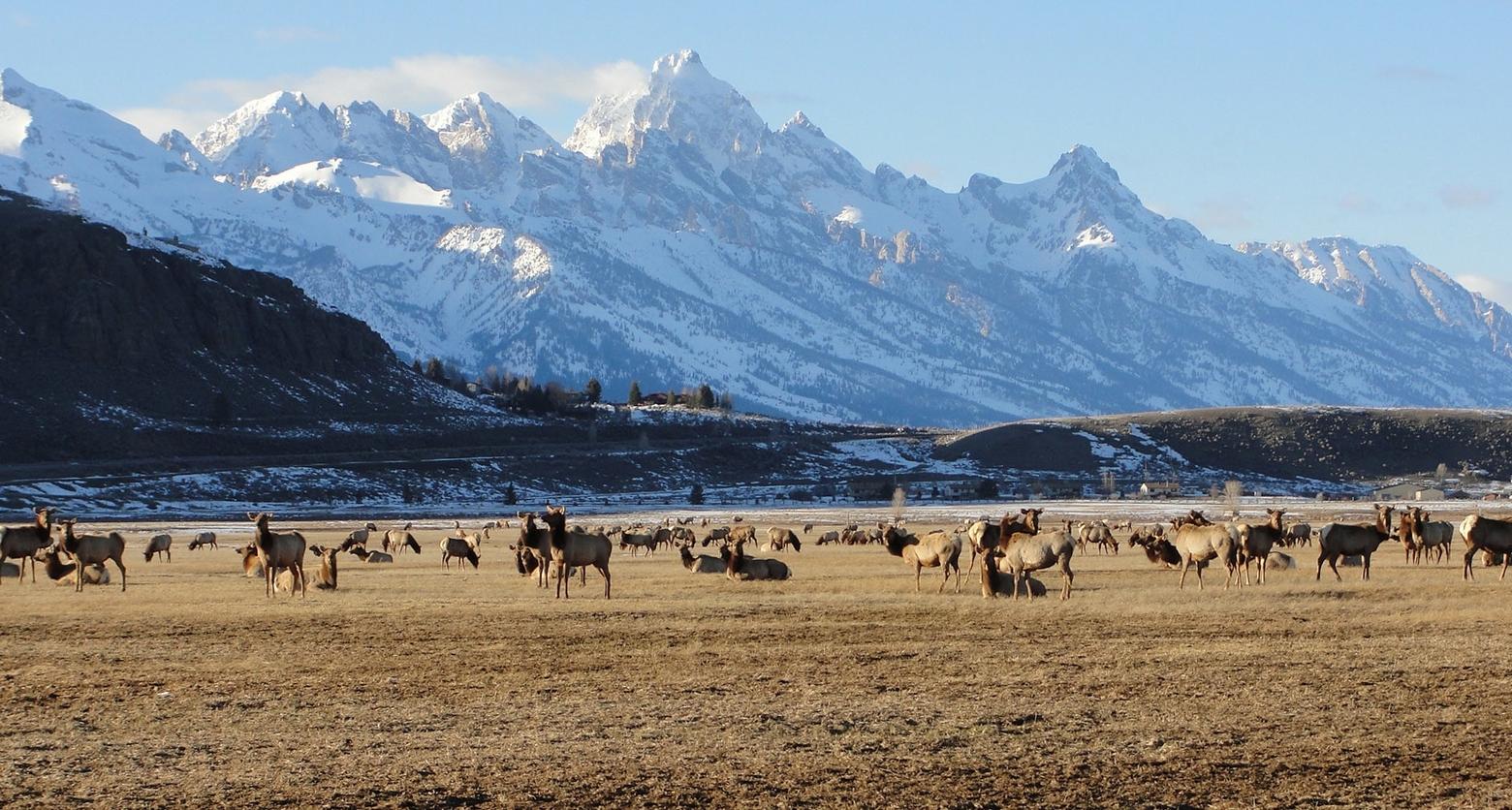Back to StoriesStudy Models Impact of Elk Feeding on CWD and Herd Health
January 16, 2025
Study Models Impact of Elk Feeding on CWD and Herd HealthResearchers analyze alternative management plans for Jackson Elk Herd and bison as FWS update nears
by Sophie Tsairis
A new study released
this month by the U.S. Geological Survey reveals critical insights into chronic
wasting disease management on the National Elk Refuge in Jackson, Wyoming.
Wyoming
state and federal agencies supplementally feed elk and bison on the
refuge during winter months, but concerns around potential outbreaks of CWD on the Jackson Elk Herd
have wildlife managers once again reconsidering the century-old program.
Jan
Fore, public affairs specialist for FWS Mountain-Prairie Region, told Mountain
Journal the study provides a foundation for the management alternatives
developed in the environmental impact statement. “[It] offers the best
available science related to the environmental consequences of various bison
and elk management strategies,” she said.
According
to Fore, Wyoming’s Jackson herds contain an estimated 11,000 elk and 500 bison.
Approximately 7,000-8,000 elk and 300-500 bison winter on the nearly
25,000-acre refuge, which is managed by FWS.
Current feeding practices could lead to CWD affecting 35 percent of the elk herd, and a reduction in population by half.
The
USGS modeling provides a preview to some of the potential alternatives outlined
in the forthcoming EIS that will guide the revision of the refuge’s bison and
elk management plan. That revision will replace the FWS 2007 management
plan and subsequent 2019 Step-Down plan.
In the study, USGS, Fish and Wildlife Service, and
additional research scientists modeled how five management scenarios would
affect the Jackson Elk Herd over a 20-year period. They concluded that current
feeding practices could lead to CWD affecting 35 percent of the herd, and a reduction
in population by half. Alternative strategies, including immediate feeding
cessation or gradual reduction, show varying impacts.
The results suggest that Jackson elk abundance
will decline under all the evaluated alternatives, however the continued
feeding alternatives predict more elk initially, and the no-feeding
alternatives predict the highest elk abundance in year 20.
The
researchers included an examination of the impact of the alternatives on bison,
and an analysis of how the elk herd would redistribute in the absence of the refuge’s
feedground. FWS expects to release the updated plan for elk and bison
management by fall 2025.
__________________________________________________________________________________________________
Mountain Journal is a nonprofit, public-interest journalism organization dedicated to covering the wildlife and wild lands of Greater Yellowstone. We take pride in our work, yet to keep bold, independent journalism free, we need your support. Please donate here. Thank you.
Related Stories
February 14, 2024
Why are bighorn and domestic sheep hanging out? Here's why we should care.
A respiratory illness common in domestic sheep can devastate wild bighorn sheep herds. In a quest to minimize transmission, a
pair of...
July 31, 2024
Warm Waters, Low Flows Trigger Early Hoot-owl Restrictions on Montana, YNP Rivers
The Gibbon, Firehole and Madison rivers in Yellowstone National Park join 17 Montana waterways that have restrictions to reduce stress on...
January 11, 2024
2023 a ‘Good Food Year’ for Yellowstone Grizzlies
Last fall, Grizzly 566
weighed in at a near record-breaking 700 pounds, Mountain Journal spoke with a grizzly expert for the latest...




